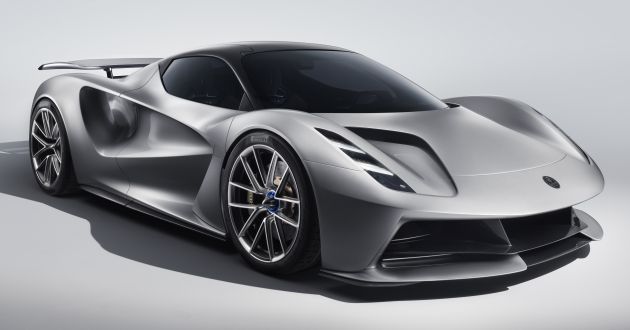Lotus Evija’s aerodynamics is like “a fighter jet in a world of kites” when compared to regular sports cars
The new Lotus Evija pure electric hypercar is making waves again today, after chief aerodynamicist Richard Hill said the Evija’s aerodynamic performance, when compared to regular sports cars, is like “comparing a fighter jet to a child’s kite.”
Hill explained that while regular cars have to “punch a hole in the air” and have that displaced air flow around the body, the Evija’s unique porosity literally lets it “breathe” the air. “The front acts like a mouth; it ingests the air, sucks every kilogram of value from it (he meant downforce), then exhales it through the dramatic rear end,” he said.
The huge front splitter is designed in three sections, in that the larger central area provides air to cool the battery pack (positioned centrally in the car, behind the two seats), while the smaller side vents cool the front e-axle. The splitter also minimises underbody air flow, thereby reducing drag and lift, but still generates some downforce.


Move to the back, the Venturi tunnels help reduce drag. Without them, the Evija would be like a parachute, but with them it’s like a butterfly net. This makes the Evija unique in the hypercar world, Hill added. Then there are active aerodynamics, where the rear wing raises when required to provide additional downforce for stability at higher speeds. It also has an F1-style Drag Reduction System, which is a deployable horizontal plane that briefly makes the car go faster.
At launch, the Evija will be Lotus’ first car with a full carbon-fibre chassis, a technology it pioneered in Formula 1. This should make it the lightest electric hypercar in the world, and together with the aerodynamics will make it one of the grippiest as well. More data on the aerodynamics will be released later this year when final testing is completed.
Richard Hill has worked with Lotus since 1986 and extensively collaborated with various exterior designers for every car the British automaker introduced. His official capacity is chief engineer of aerodynamics and thermal management – besides developing aero performance, he also oversees all vehicle cooling, cabin ventilation and thermal management systems.
To recap, the Lotus Evija is developed with Williams Advanced Engineering (WAE), featuring four extremely compact Electrical Drive Unit (advanced electric motor) that is targeted to make about 500 PS each. The total system output is said to be 2,000 PS and 1,700 Nm, allowing the hypercar to sprint from 0-100 km/h in under three seconds, or 0-300 km/h in under nine seconds.
Production is slated to begin later this year, with Lotus stating that the first year’s allocation has already been snapped up by customers around the world. It is also Lotus’ first all-new model since 2008, and will be the world’s most powerful production road car.




















The post Lotus Evija’s aerodynamics is like “a fighter jet in a world of kites” when compared to regular sports cars appeared first on Paul Tan's Automotive News.
from Paul Tan's Automotive News
Read The Rest:paultan...




Post a Comment